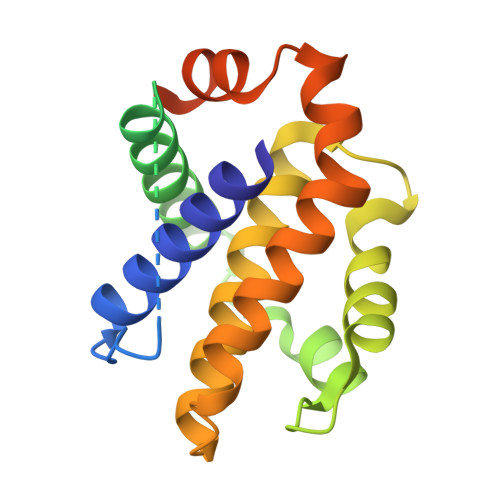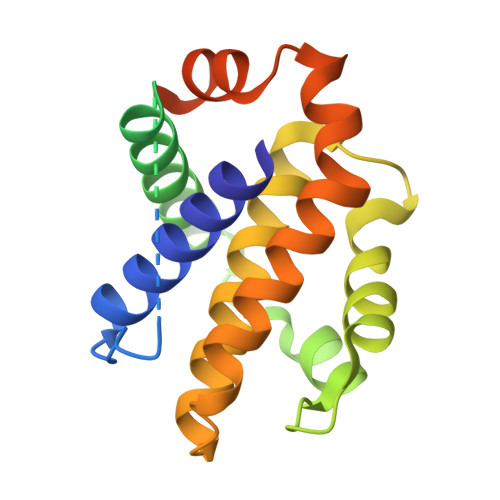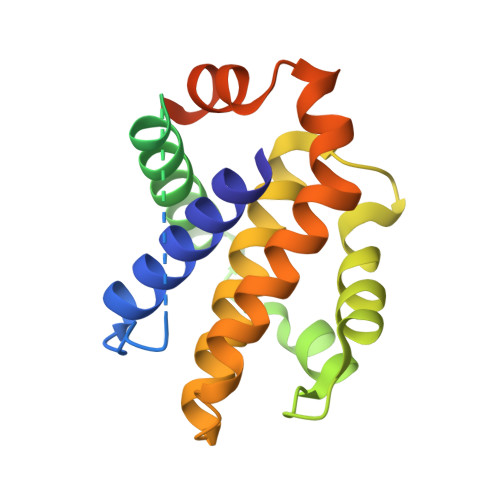Bcl-XL mutations suppress cellular sensitivity to antimycin A.
Manion, M.K., O'Neill, J.W., Giedt, C.D., Kim, K.M., Zhang, K.Y., Hockenbery, D.M.(2004) J Biological Chem 279: 2159-2165
- PubMed: 14534311
- DOI: https://doi.org/10.1074/jbc.M306021200
- Primary Citation of Related Structures:
1R2D, 1R2E, 1R2G, 1R2H, 1R2I - PubMed Abstract:
Cells expressing high levels of the BCL-X(L) anti-apoptotic protein are preferentially killed by the mitochondrial inhibitor antimycin A (AA). Computational modeling predicts a binding site for AA in the extended hydrophobic groove on BCL-X(L), previously identified as an interface for dimerization to BAX and related proapoptotic proteins. Here, we identify BCL-X(L) hydrophobic groove mutants with normal cellular anti-apoptotic function but suppressed sensitivity to AA. The LD(50) of AA for cells expressing BCL-X(L) mutants directly correlates with the measured in vitro dissociation constants for AA binding. These results indicate that BCL-X(L) is a principal target mediating AA cytotoxicity.
Organizational Affiliation:
Divisions of Human Biology and Clinical Research, Fred Hutchinson Cancer Research Center, Seattle, WA 98109, USA.
















